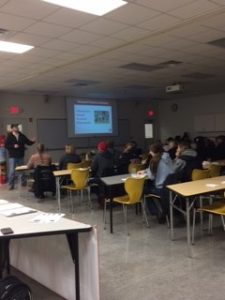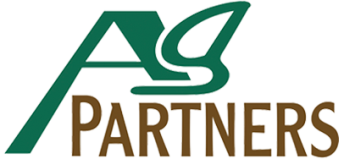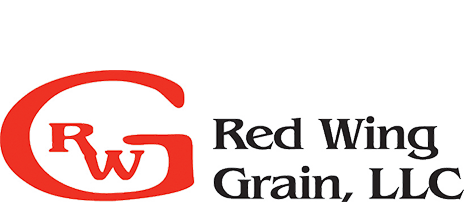On February 22, 2018, Ag Partners and Western Wisconsin Nutrition hosted two beef cow/calf meetings to get customers rearing and ready for this calving season, which is here for some and approaching fast for others! There was a meeting at 11AM at the Zumbrota VFW and another at 6PM that night at UWRF Mann Valley Farms. We learned many valuable aspects about taking care of our beef herd from our three speakers; LeeAnn Waugh, Carl Sackreiter, and Chad Zehnder.
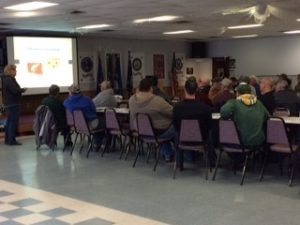
LeeAnn, who is an Ag Partner’s Beef Nutritionist, presented about a Calving Checklist. It is good to make sure you have all of the calving supplies you will need before calving begins. For example, naval disinfectant, ID tags and taggers, record book, banding supplies, colostrum replacer, and other items that may be needed at calving time. It’s good idea to have these items about a month prior to calving time starts because you never know if one may come early! LeeAnn shared about the 5 C’s of having healthy calves that will perform well as cows later in their life; colostrum, calories, cleanliness, consistency, and comfort. Colostrum is the most important thing for the newborn calf. It supplies the calf not only with calories and nutrients, but also antibodies from the mother, which improves their immune response. In the womb, the calf is in a bacteria free environment, but once exposed to the world, they are fighting bacteria for the rest of their lives. Starting the calf off with good immunity will make them better animals in the near and far futures. Before focusing on the calf, we must be sure the cow is in proper condition with good nutrition, so she can have a healthy calf without difficulty during labor. Studies have shown that a body condition score of 6 is ideal for the cow to calve, clean properly, and breed back in a timely manner. If your animals need to increase their body condition score, late fall to early winter are the best times. Ensuring your silage is good quality and free of mycotoxins is important to avoid digestive upsets, increase feed efficiency, and maintain good reproduction. Mycotoxins may form from mold on the plant in the field as well as from mold growth in storage. Feeding products like yeast, organic and chelated minerals will increase the quality of colostrum and help the cow clean after labor. Ag Partners has a rebate program beginning on March 12th that covers a variety of minerals available to you. Contact LeeAnn or Carl with any questions regarding the program.
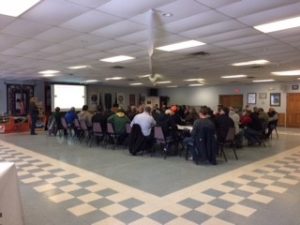
Carl, an Ag Partner’s Beef Nutritionist, discussed the many benefits of creep feeding. There are studies that have shown that creep feeding calves when they are still with their mother increases weaning weight and efficiency of finishing time. Over three studies, there was an average of a 56 pound increase in calves that were fed creep verses calves not fed creep feed. Not only are those calves heavier, they have a kick start to the marbling process and it will allow them to express their full genetic potential. Creep feeding teaches the calves to eat from a source other than their mother. With the calves having access to grain, it will also stretch pasture availability for the cows and heifers, allowing the pasture last a bit longer. Although creep feeding is good in most cases, there are times when it may not be the answer. For example, if there happens to be a year where adequate and consistent forage quantity and quality is accessible throughout the season; this is rare, but may happen! Small framed animals and those that flesh easily are cattle that may not benefit from creep feeding. Be sure to evaluate your situation before you choose to creep feed and when deciding what creep feed to use. Ag Partners has multiple creep feeding options. Feel free to contact Carl or LeeAnn with questions regarding the products available and which may be best for your operation.
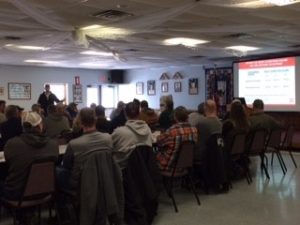
Chad Zehnder, a Purina consultant, discussed calving and breeding nutrition. The biological priority for nutrients begins at maintenance, then growth, lactation, and finally to reproduction. Therefore, to achieve high reproduction rates and increase lactation, the cattle need to have a quality diet to cover maintenance and growth first. Like discussed previously, cattle with body condition scores (BCS) in the 5 to 6 range had higher calf birth weights and lower assistance at calving compared to cattle with a BCS of 4 or 7. It is important for your cattle to have accessibility to quality vitamins and minerals throughout their gestation and lactating periods. The Accuration High Fat Block is a 200 pound protein block that balances nutrient deficiencies in forages. There is a 10% added fat that provides additional energy to cattle on poor quality forage or are lacking energy in their diet. Consider this block if you are doing some late fall grazing, have mid to late gestation cows, and/or for your replacement heifers. Poor nutrition or surrounding environment may lead to fatal diseases like coccidiosis. Even though some may not see clinical signs of this, it is a very common illness affecting young cattle, ages 21 days to about 2 years, that is on almost all farms. Clinical signs of coccidiosis range from bloody scours, to rough hair coat, to decreased feed intake, to reduced weight gain and growth. The sub clinical signs are not as visual, like slower growth and development and decreased feed consumption and efficiency, but still negatively affect your cattle. There are drugs that prevent and treat coccidiosis, like Deccox, ionophores, amprolium, and sulfa. Each of these are effective at various life stages of the coccidiosis. There are many ways to manage cocci along with the drugs. Cleanliness is key; keep water tanks clean, remove all manure from bunks, keep pens clean and bedded well, reduce standing water in pens, and do not overcrowd. Look to any of these management decisions if you want to decrease the possibility of coccidiosis outbreaks on your farm or if you have had an outbreak.
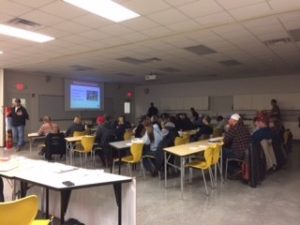
To put all of the information we gathered at the meetings together, Chad gave us some “food for thought”: cows must be pregnant by 83 days after calving to maintain a 12-month calving interval. Therefore, proper management, high quality nutrition, and accessibility to minerals and vitamins is important to keep your herd healthy and on schedule for the next year.
